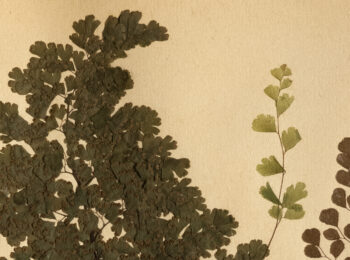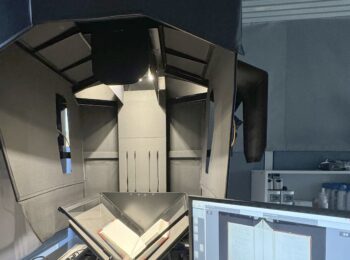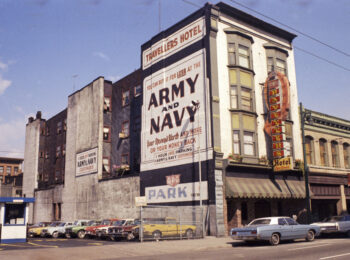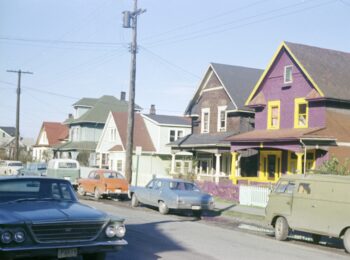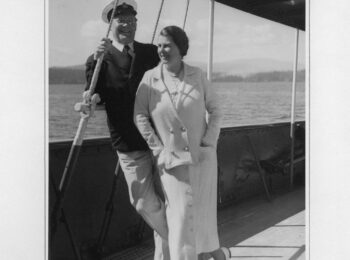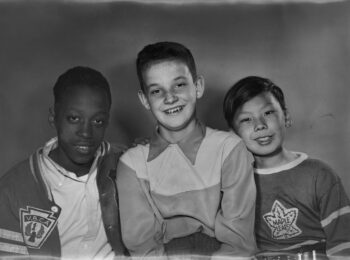Cased photograph is a term used to describe a class of photographs popularized in the mid-19th century that includes daguerreotypes, ambrotypes and tintypes. The ‘case’ refers to the small wooden hinged case that houses these photographs. The photographic plate is typically enclosed in a sealed package, consisting of a sheet of cover glass, a brass mat, and a metal foil preserver. The protective wooden case can be highly decorative, covered in tooled leather, paper, cloth, or early molded thermoplastic (see Union case).
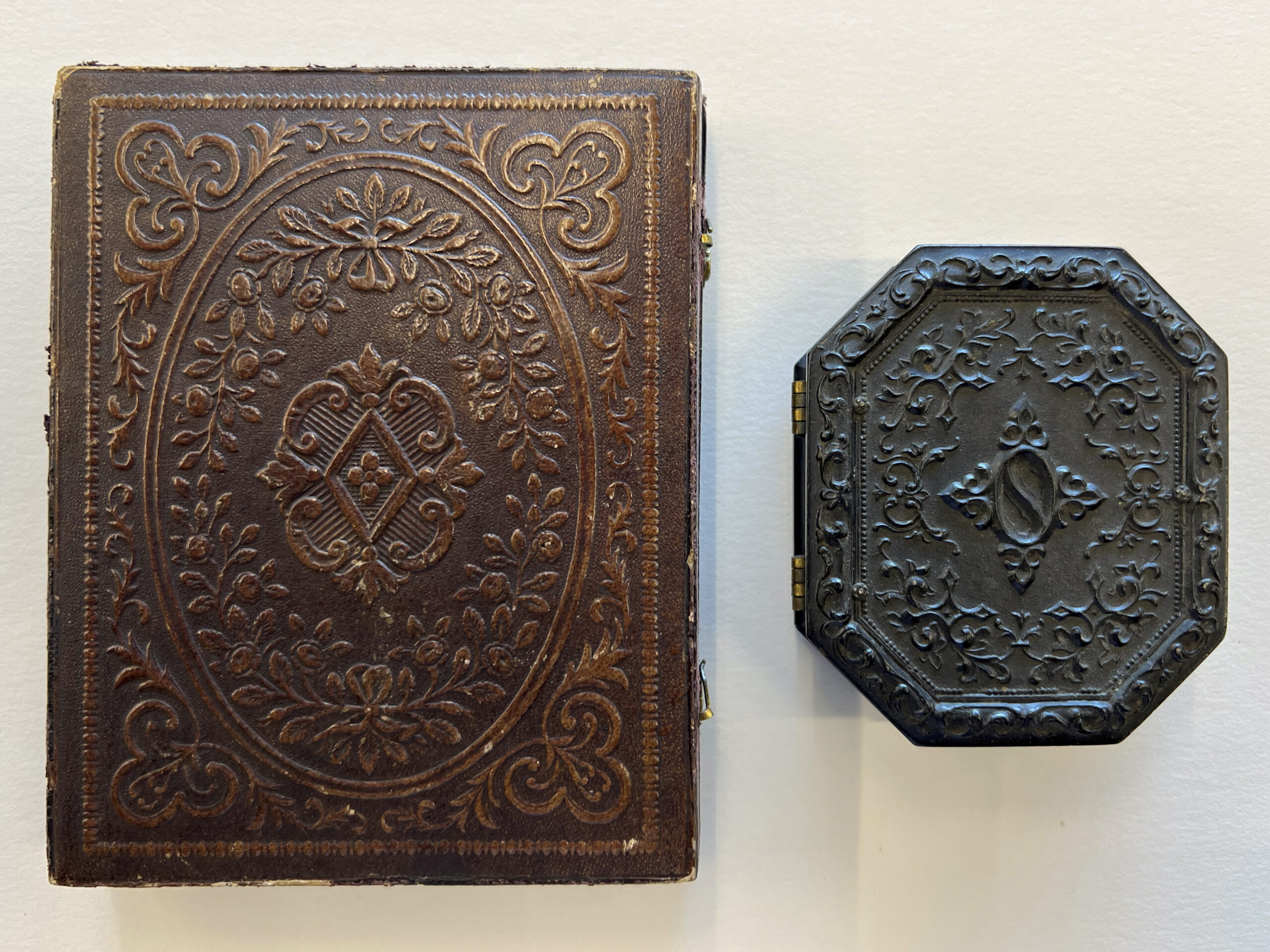
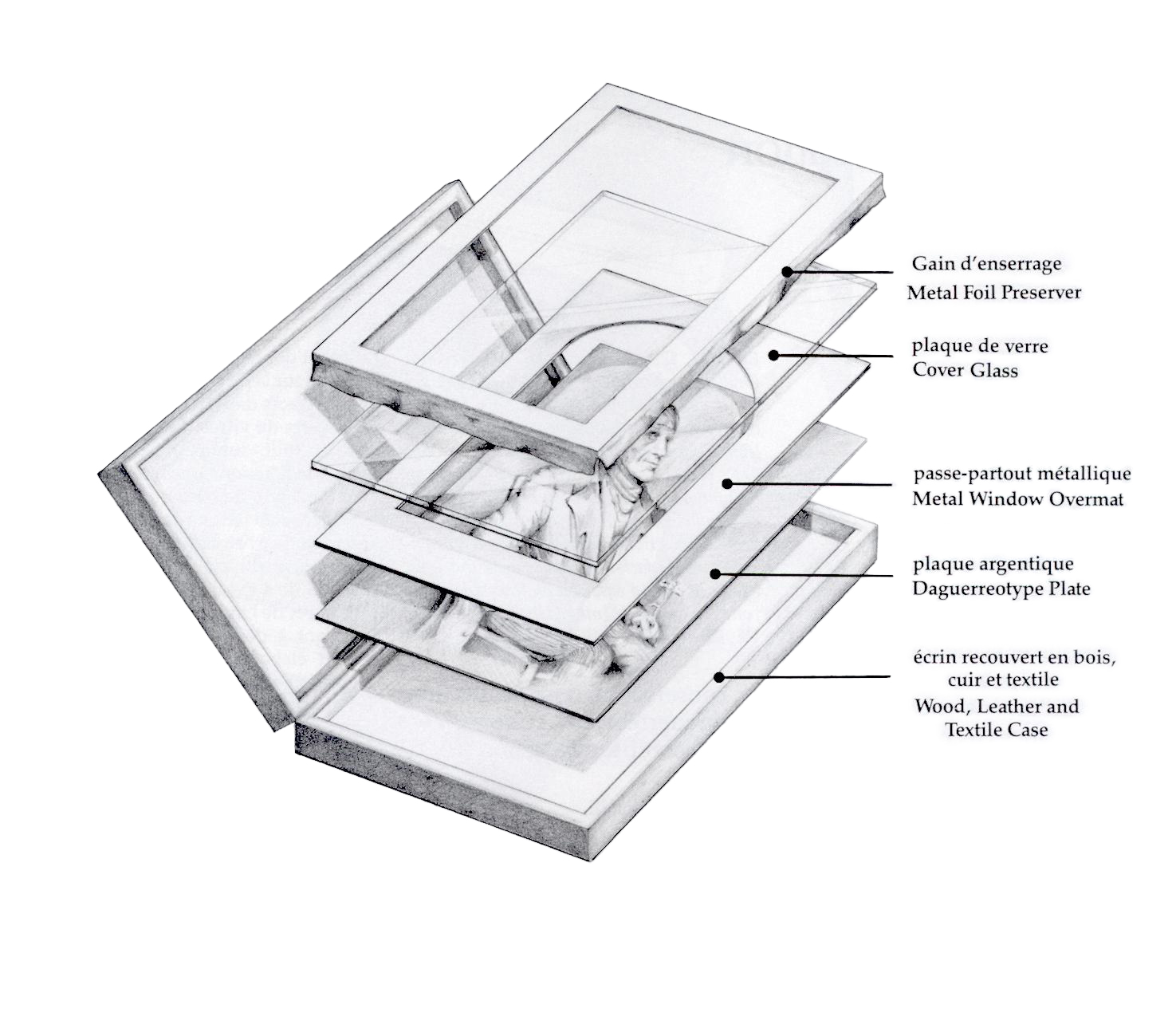
Aside from their shared presentation format, these photographs are uniquely different photographic processes. A daguerreotype is a direct positive photograph on a copper plate coated with a polished layer of metallic silver. Daguerreotypes are characteristically identified by their highly reflective mirror-like surface and their ability to appear as both a positive and a negative simultaneously, depending on the angle they are viewed at. An ambrotype is a wet-collodion negative on a glass plate that appears as a positive due to the presence of a dark background, either in the form of paint (lacquer), fabric or paper. A tintype is a wet-collodion direct positive on a lacquered iron plate.
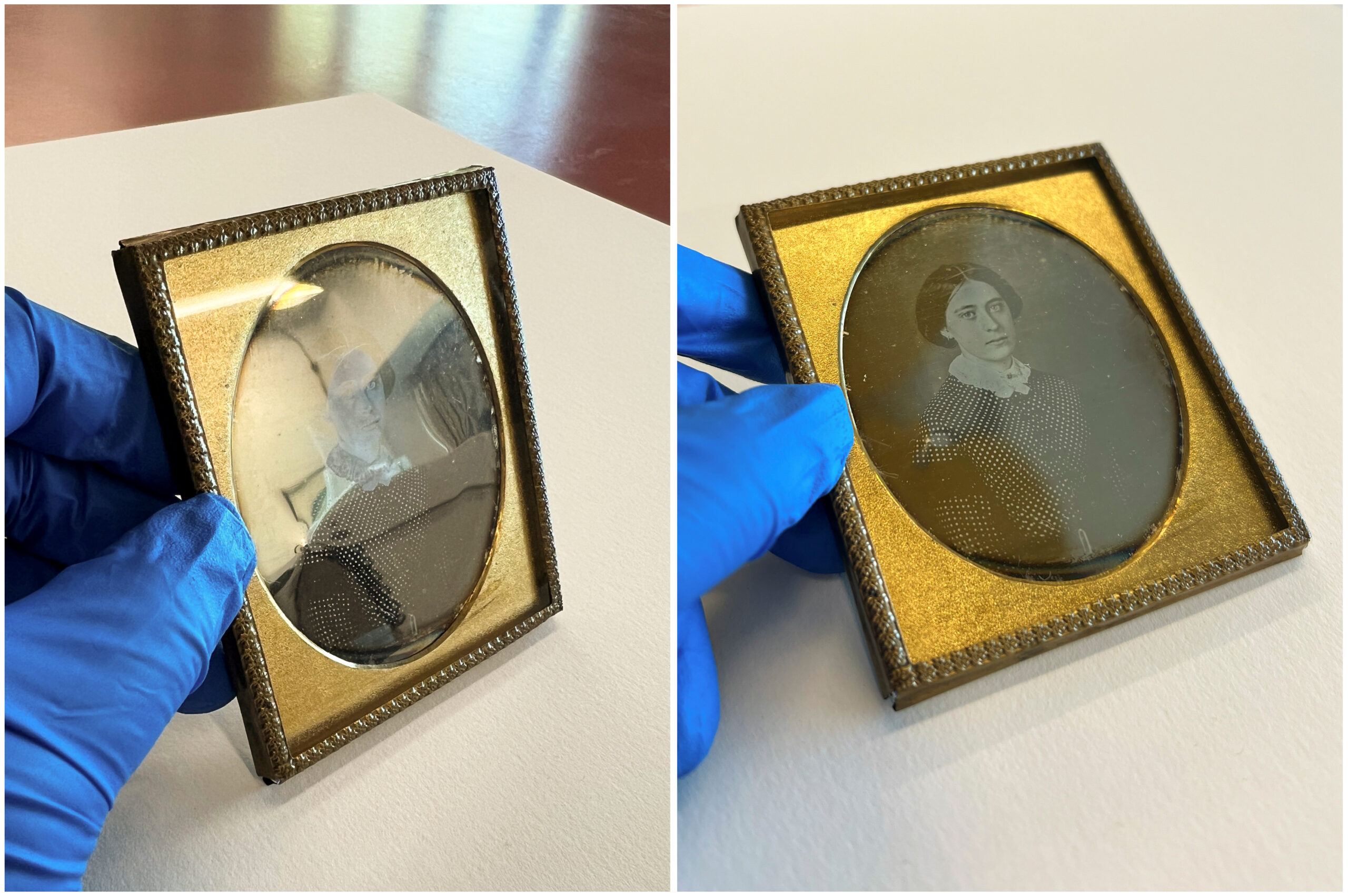
Finding a cased photograph in most archival collections can range from an uncommon to a rare occurrence. Given the rarity of this form of record, we decided to prioritize the conservation treatment and digitization of the daguerreotypes (and a few ambrotypes) in our holdings during the latest round of annual digitization cleanup.
Conservation Issues with Cased Photographs
The overall treatment objective is to address three common issues found in cased photographs:
- The accumulation of heavy surface grime and accretions from years of handling and from inappropriate storage environment.
- Broken seal on the packaged plate resulting in the introduction of atmospheric pollutants, which causes corrosion on the brass mats and tarnishing on the image silver on the daguerreotypes.
- Physical damage, usually as partially or fully broken hinge in the case, often leading to the loss of the cover or the case entirely.
Unlike other types of records commonly found in archives, where the original enclosure may hold little informational value to the item, the ornate housing for cased photographs play an integral part to their overall aesthetics. Not only do they provide period-appropriate framing for the image, but the case is instrumental in protecting these photographs against various mechanical and chemical deterioration mechanisms. Therefore, addressing the conservation issues for the case is equally as important as stabilizing the condition of the photographs themselves.
Conservation Treatment
A total of six case photographs from the Rogers family fonds were treated, each with its own set of conservation issues. Two 1840s-era daguerreotypes, “Portrait of an unidentified woman” and “John and Isabella Fairweather,” and their cases will be focused here to highlight the key steps in the treatment.
Each packaged daguerreotype was carefully separated from its tray case with a microspatula, taking care not to touch the delicate image silver, as it is very susceptible to scratches. Although disassembly is not normally recommended for sealed daguerreotypes, it was clear by the remnants of old sealing tape that the original seals were broken long before their arrival at the Archives. Therefore, disassembly was justified as it allowed for cleaning that will benefit the long-term preservation of these photographs and produce digitized images with a higher clarity.
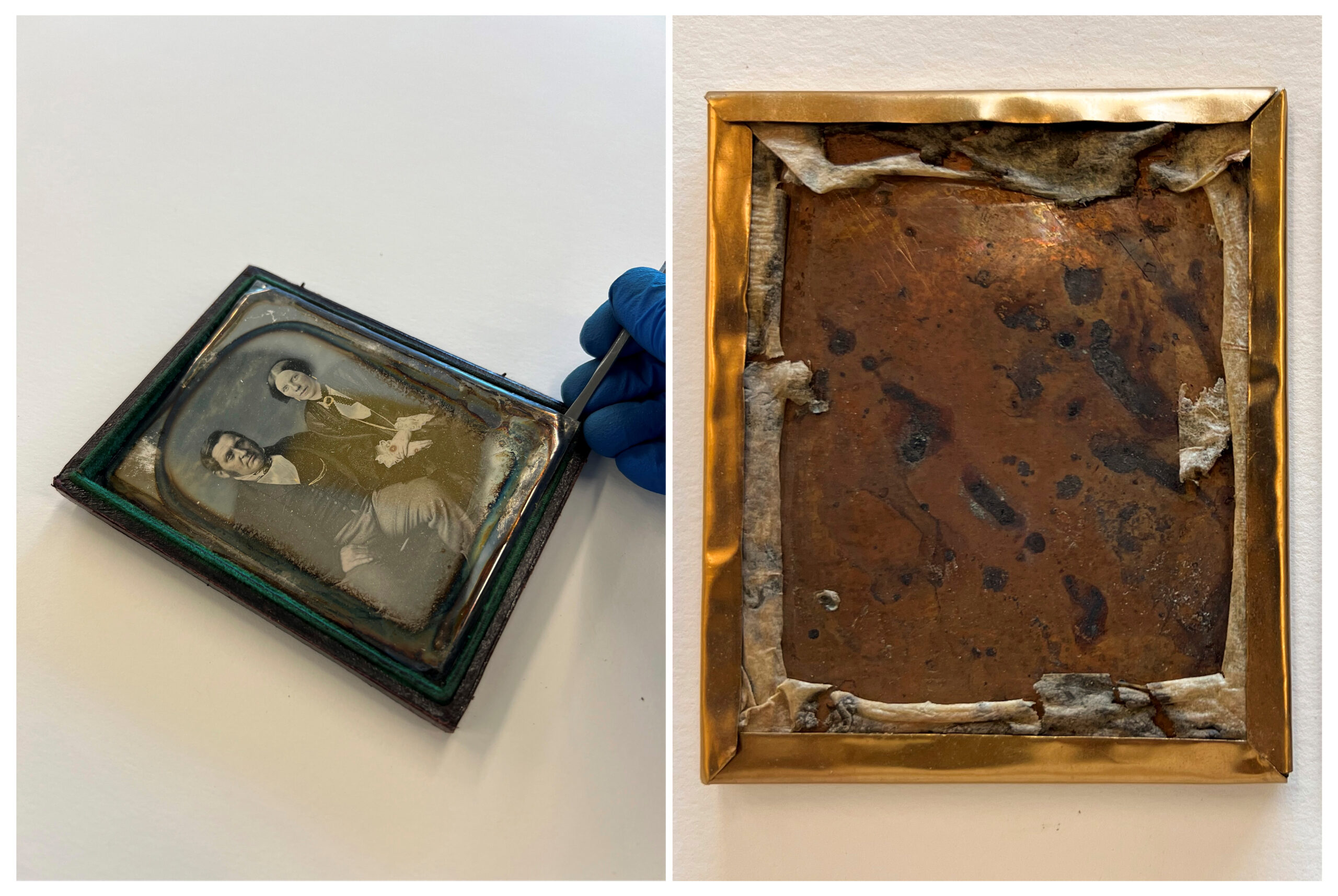
After disassembly, each component of the plate package was cleaned, the remnants of the old tape removed to allow for better adhesion to the new sealing tape. The heavy accumulation of surface grime on the cover glass, brass mat and preserver were cleaned with a solvent solution. Although the dark corrosion products on the brass mat are disfiguring, they were left in-situ. Since the treated daguerreotypes will be rehoused in a controlled environmental climate in the Archives’ storage, the corrosion products will not pose an immediate risk to the stability of the object. Larger accretions trapped in the recessed features of the brass preserver were gently dislodged. A thin layer of microcrystalline wax was applied and buffed on the metal-foil preserver to deter future oxidation. The surface dirt on the image silver was very gently removed using a soft bristled brush. The loose accretions and dust trapped in the fabric lining of the cases were brushed and vacuumed away.
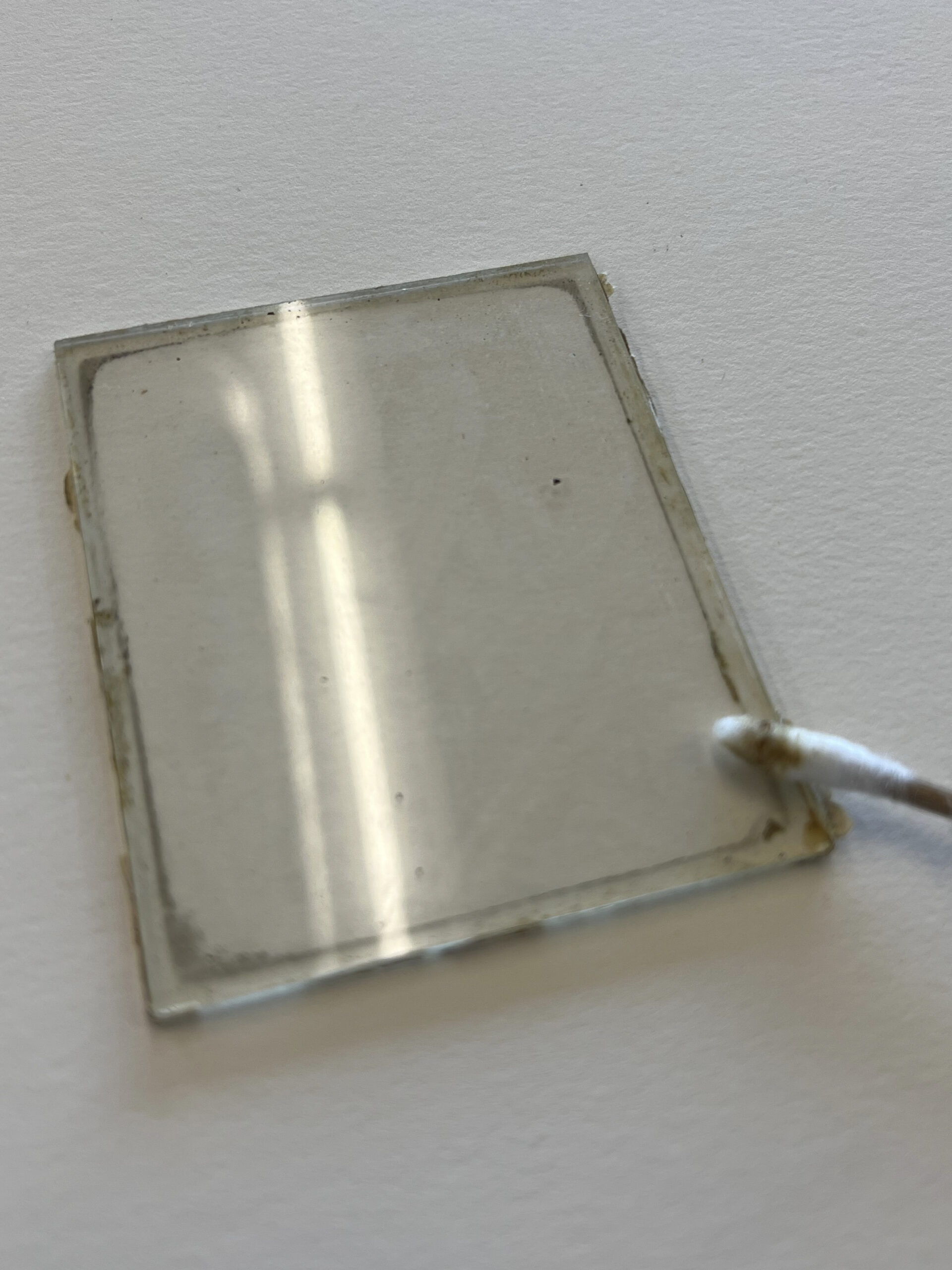
After all the components of the daguerreotype packages were cleaned, they were reassembled in their original orientation and sealed with an archival quality pressure-sensitive tape. An unbuffered, ‘4-flap’ paper enclosure was added to the verso of the plate package to prevent direct contact between the acrylic-based sealing tape and the daguerreotype.
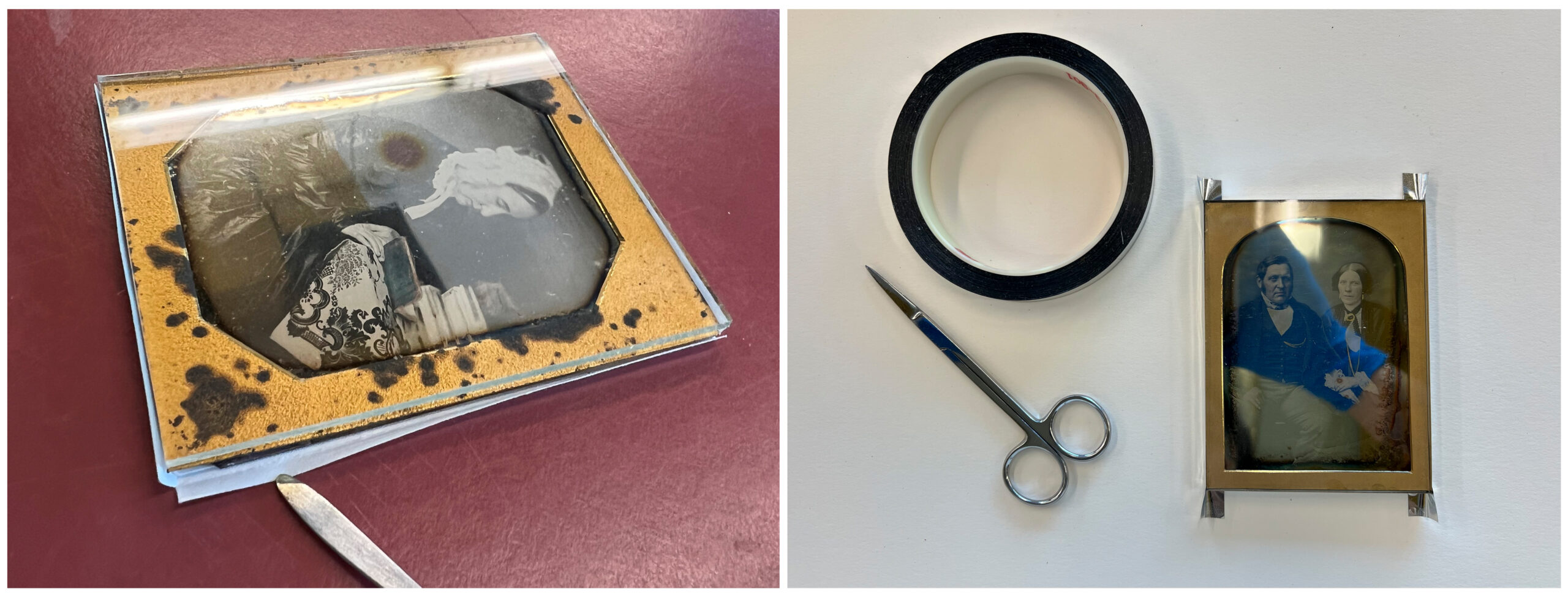
The broken joint in the hinged case was repaired with a sympathetic archival material that was carefully inserted under the original leather. The repaired joint allows for a more robust hinge and a better point of attachment for the two halves of the case. While repairing the “portrait of the unidentified woman,” it was noticed that the coloured fabric lining was different in the case tray compared to the cover. The mismatched lining tipped off the realization that the case tray and cover were mistakenly swapped with another cased photograph in the same fonds (and container).
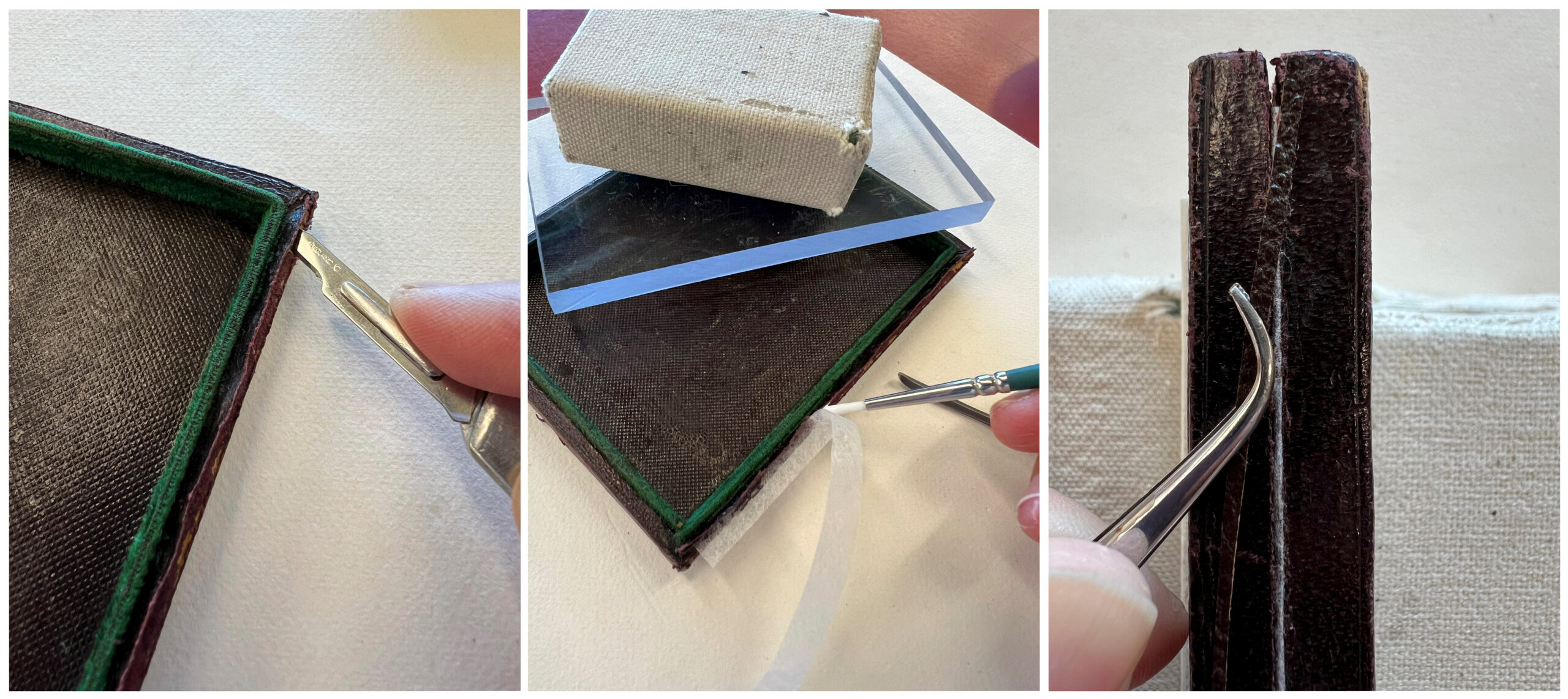
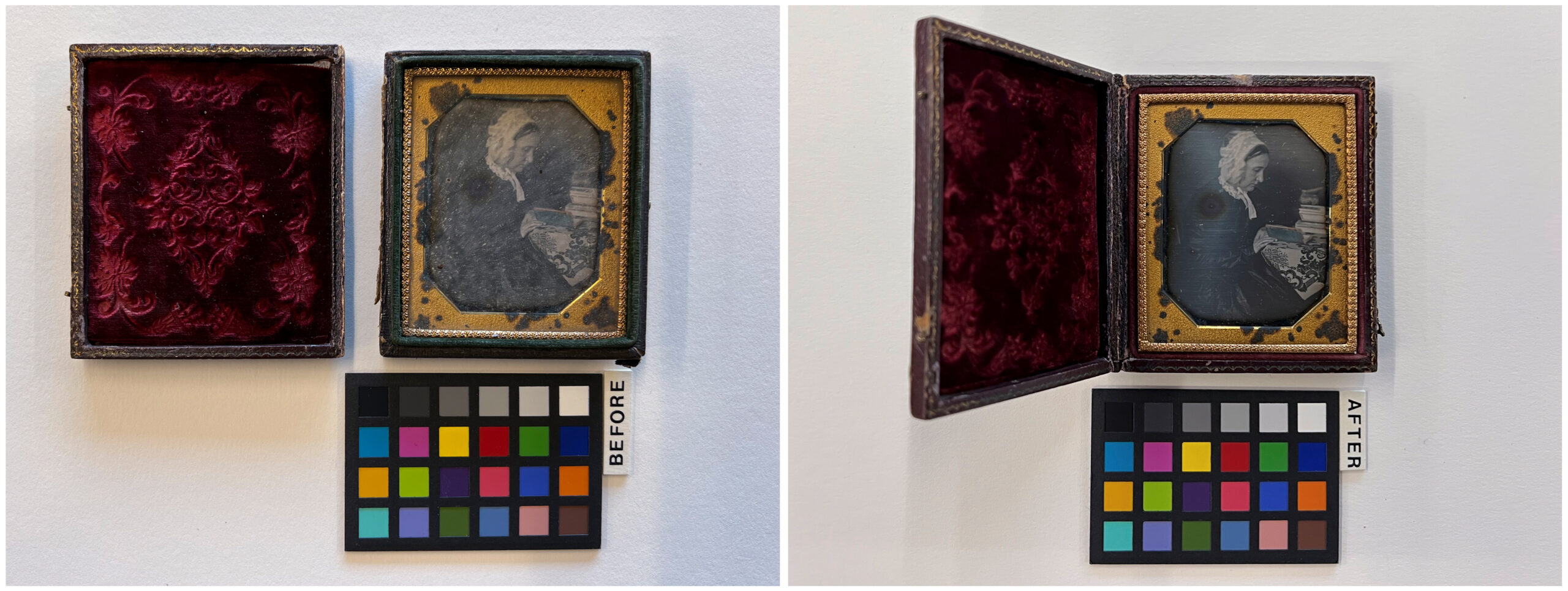
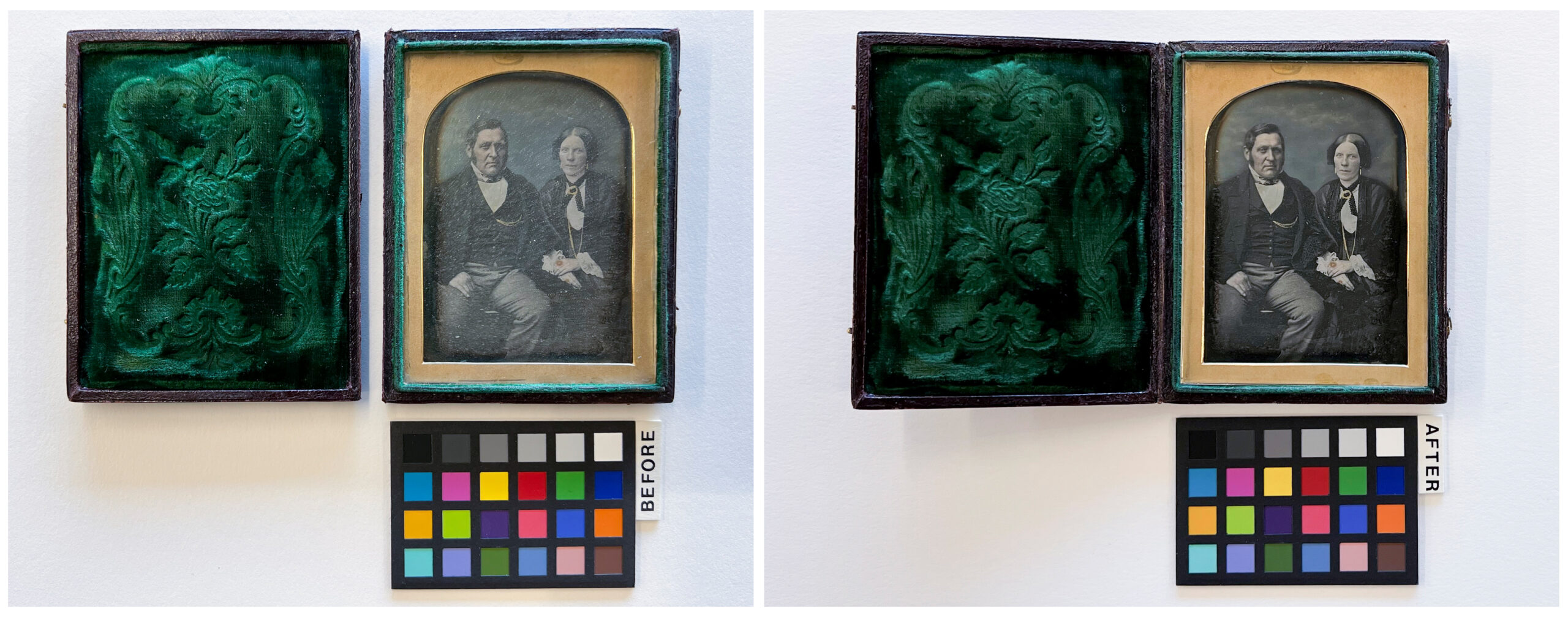
Once the conservation treatment was completed, the daguerreotypes and their cases were digitized and made available online on our database, linked here: [portrait of unidentified woman] (Reference code: AM1368-S3-: 2000-018.808) and John and Isabella Fairweather (Reference code: AM1368-S3-: 2000-018.810).
For those interested in learning more about the laborious process involved in developing a daguerreotype, the Victoria and Albert Museum has an excellent short video breaking down the steps. Go check it out to see how these photographical memories were captured and visit the Archives’ database to look at these cased photographs in high resolution!


